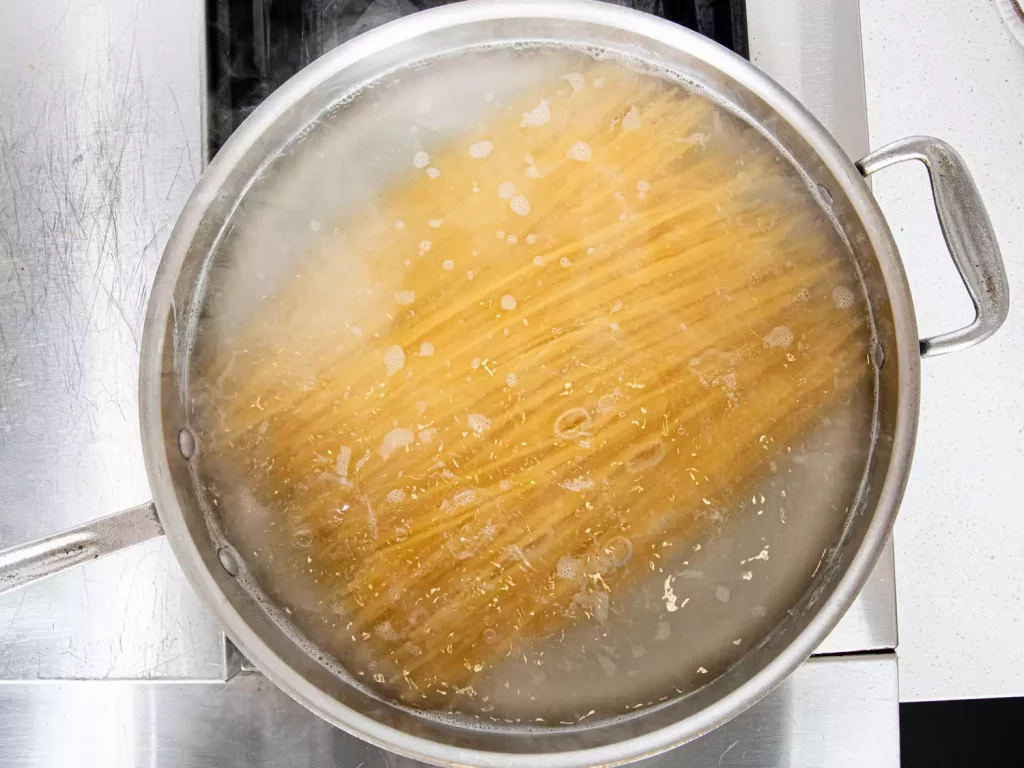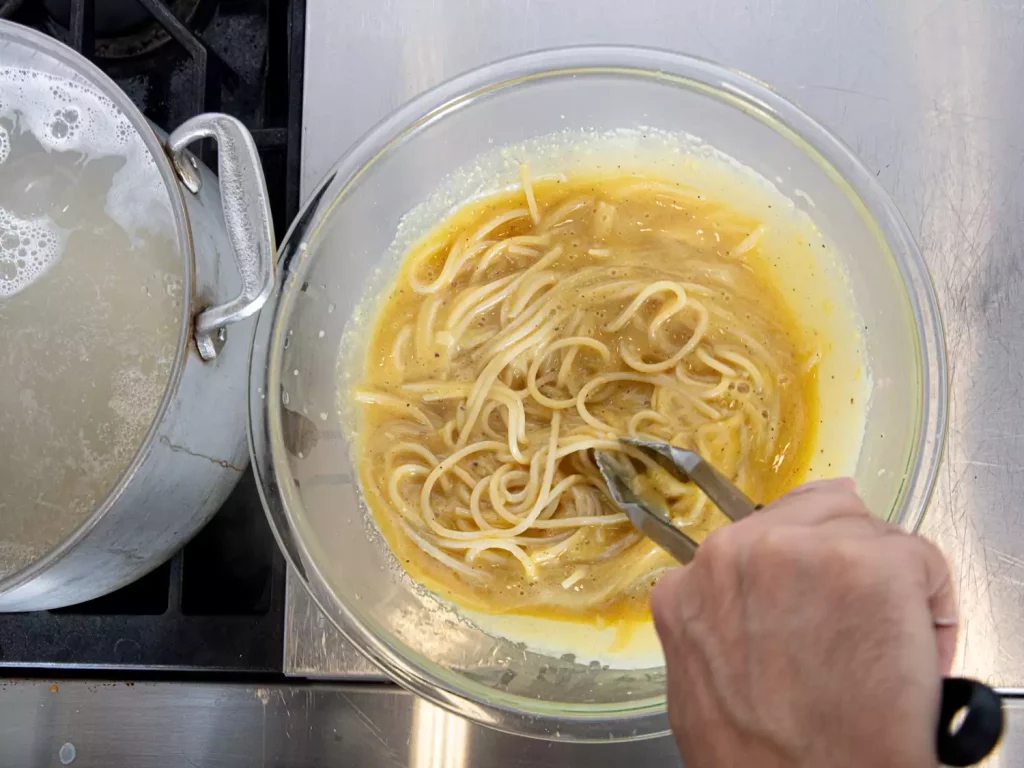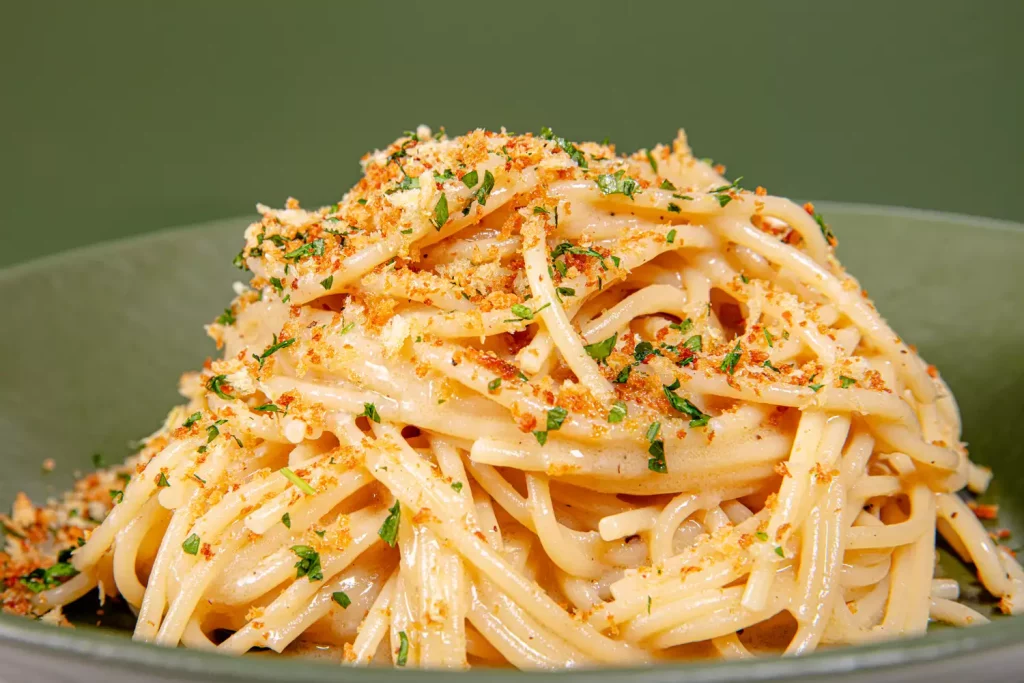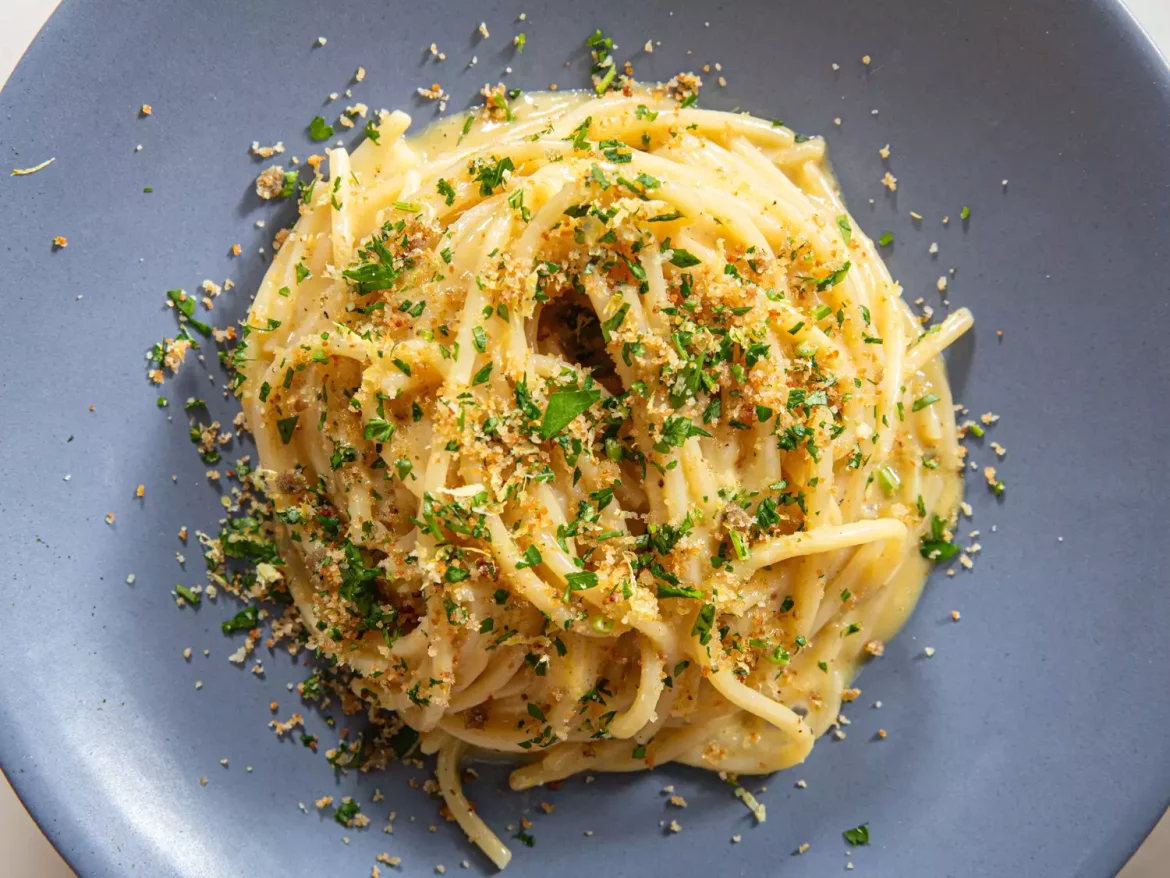Caesar Spaghetti is an innovative culinary creation that marries the classic Caesar salad with the beloved Italian pasta dish. This unique recipe combines the creamy, tangy flavors of Caesar dressing with perfectly cooked spaghetti, creating a dish that’s both comforting and sophisticated. In this comprehensive guide, we will delve into every aspect of Caesar Spaghetti, from ingredient selection and preparation to variations and health considerations.
Ingredient Analysis
Spaghetti: Spaghetti is a long, thin pasta that holds sauces well due to its shape and texture. Opt for high-quality, durum wheat spaghetti for the best results. Durum wheat pasta has a firm texture and holds up well to sauces and cooking.
Caesar Dressing: The star of this dish, Caesar dressing, typically includes ingredients like egg yolks, garlic, anchovies, lemon juice, Dijon mustard, and Parmesan cheese. The richness and tang of Caesar dressing are what make this pasta unique. You can use store-bought Caesar dressing for convenience or make your own for a more personalized touch.
Garlic: Fresh garlic provides a robust flavor that complements the Caesar dressing. When sautéed, garlic adds a savory depth to the dish.
Parmesan Cheese: Parmesan cheese is essential for adding a salty, umami flavor. It also helps to thicken the sauce and gives the dish a creamy texture. Use freshly grated Parmesan for the best flavor and texture.
Lemon Juice: Fresh lemon juice adds a bright, acidic note that balances the richness of the Caesar dressing. It enhances the overall flavor profile of the dish.
Chicken or Bacon (Optional): Adding grilled chicken or crispy bacon can make the dish more substantial and add additional layers of flavor. These ingredients can be used to customize the recipe according to personal preferences.
Herbs: Fresh herbs like parsley or basil can be used to garnish the dish, adding a touch of freshness and color. They also enhance the overall flavor and presentation.
Preparation Steps
1. Cook the Spaghetti
Start by bringing a large pot of salted water to a rolling boil. Add the spaghetti and cook according to the package instructions until al dente. The pasta should have a slight bite to it, as it will continue to cook slightly when combined with the sauce. Reserve about a cup of pasta cooking water before draining the spaghetti.

2. Prepare the Caesar Dressing
While the pasta is cooking, prepare the Caesar dressing. If using store-bought dressing, give it a good shake before using. For homemade dressing, combine egg yolks, minced garlic, anchovy paste, lemon juice, Dijon mustard, and freshly grated Parmesan cheese in a bowl. Whisk until smooth and creamy. Adjust the seasoning with salt and pepper to taste.

3. Sauté the Garlic
In a large skillet, heat a tablespoon of olive oil over medium heat. Add minced garlic and sauté until fragrant and golden, being careful not to burn it. This step is crucial as it brings out the garlic’s natural sweetness and depth of flavor.
4. Combine the Ingredients
Add the cooked spaghetti to the skillet with the sautéed garlic. Toss to coat the pasta evenly with the garlic oil. Slowly incorporate the Caesar dressing, adding a little at a time, and tossing to combine. The heat from the pasta will help the dressing to coat the spaghetti evenly.
5. Adjust the Consistency
If the sauce appears too thick, gradually add some of the reserved pasta cooking water to loosen it. The starchy water will help the sauce adhere to the pasta and achieve the desired consistency.
6. Add Optional Ingredients
If you’re using grilled chicken or crispy bacon, add it to the skillet at this stage. Toss to distribute evenly throughout the pasta. This step adds protein and extra flavor, making the dish more hearty and satisfying.

7. Garnish and Serve
Transfer the Caesar spaghetti to serving plates. Sprinkle freshly grated Parmesan cheese and chopped fresh herbs over the top. A final squeeze of lemon juice adds brightness and enhances the dish’s flavor.
Cooking Tips
- Pasta Cooking Water: Always reserve some pasta cooking water before draining. It’s an excellent tool for adjusting the sauce’s consistency.
- Dressing Temperature: Adding cold dressing to hot pasta helps it to emulsify better, coating the spaghetti more evenly.
- Garlic Care: When sautéing garlic, keep a close eye on it. It can quickly go from golden to burnt, affecting the overall taste of the dish.
Variations
1. Vegetarian Caesar Spaghetti: For a vegetarian version, omit the anchovies in the Caesar dressing and use vegetarian Parmesan cheese. You can also add sautéed vegetables like bell peppers, mushrooms, or spinach for added nutrition.
2. Seafood Caesar Spaghetti: Substitute the grilled chicken with sautéed shrimp or crab for a seafood twist. The delicate flavor of seafood pairs beautifully with the tangy Caesar dressing.
3. Creamy Caesar Spaghetti: For an extra creamy texture, mix a bit of heavy cream or crème fraîche into the Caesar dressing before combining it with the pasta.
4. Spicy Caesar Spaghetti: Add a pinch of red pepper flakes to the garlic while sautéing for a spicy kick. You can also incorporate a splash of hot sauce into the Caesar dressing for added heat.
5. Gluten-Free Option: Use gluten-free spaghetti made from rice or other gluten-free grains to accommodate dietary restrictions. The sauce and preparation methods remain the same.

Nutritional Information
Caesar Spaghetti is a flavorful dish that provides a mix of carbohydrates, protein, and fats. Spaghetti offers a source of energy through carbohydrates, while Parmesan cheese and Caesar dressing contribute protein and fats. The addition of vegetables or protein sources like chicken or bacon enhances the nutritional profile, making it a well-rounded meal.
Caloric Content: The calorie count can vary depending on the type of Caesar dressing used, the amount of Parmesan cheese, and any additional ingredients like chicken or bacon. Generally, a serving of Caesar Spaghetti ranges between 400-700 calories.
Health Considerations: While delicious, Caesar Spaghetti is rich in fats and calories, primarily from the dressing and cheese. It’s best enjoyed in moderation, especially if you’re watching your caloric intake or dietary fat. Opting for lighter versions of the dressing or using less cheese can help reduce the calorie content.
Conclusion
Caesar Spaghetti is a delightful fusion of classic Caesar salad flavors and Italian pasta tradition. With its creamy, tangy dressing and perfectly cooked spaghetti, it offers a unique and satisfying dining experience. By following the detailed preparation steps and experimenting with various variations, you can create a personalized version of this dish that suits your taste and dietary preferences. Whether served as a main course or a side dish, Caesar Spaghetti is sure to impress and satisfy.
This expanded version provides a comprehensive overview of Caesar Spaghetti, including detailed ingredient analysis, preparation steps, cooking tips, variations, and nutritional information.

